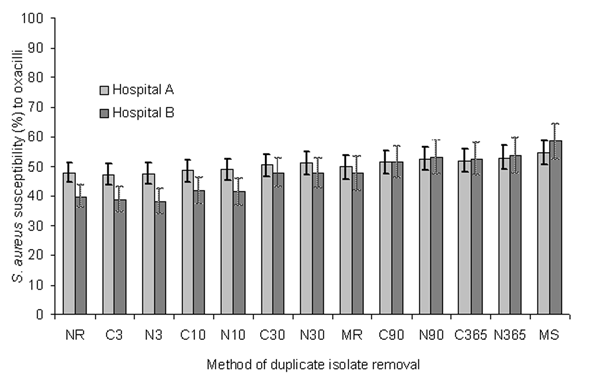Volume 11, Number 10—October 2005
Research
Isolate Removal Methods and Methicillin-resistant Staphylococcus aureus Surveillance
Figure 2

Figure 2. Effect of duplicate isolate removal strategies on the number of Staphylococcus aureus isolates and percentage susceptible to oxacillin for all patients in Hawaii, 2002. The 95% confidence interval for the proportion is shown in brackets. NR, no removal; MR, most resistant; MS, most susceptible; N, NCCLS algorithm; C, Cerner algorithm; the number indicates the days in the analysis period.
Page created: February 22, 2012
Page updated: February 22, 2012
Page reviewed: February 22, 2012
The conclusions, findings, and opinions expressed by authors contributing to this journal do not necessarily reflect the official position of the U.S. Department of Health and Human Services, the Public Health Service, the Centers for Disease Control and Prevention, or the authors' affiliated institutions. Use of trade names is for identification only and does not imply endorsement by any of the groups named above.